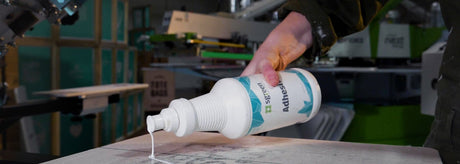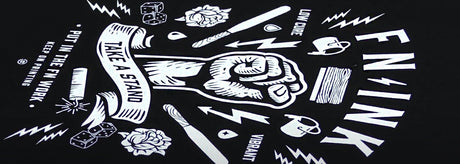
Tips and Tricks for Using a Water-Based Pallet Adhesive
Decided you're ready to kick the aerosol can? Don't blame you. Who wants to inhale chemicals from a spray adhesive? Plus, a spray adhesive gets everywhere — you, your glasses (if you wear...
Free Shipping in the Contig. US Learn More

Decided you're ready to kick the aerosol can? Don't blame you. Who wants to inhale chemicals from a spray adhesive? Plus, a spray adhesive gets everywhere — you, your glasses (if you wear...

You’ve started your screen printing business and have begun supplying your customers with awesome products. Now it’s time to get your business online and share it with the masses....

Since 2005, the Riley Hopkins press has evolved 11 times. If you look back into Riley Hopkins's history, there’s been a lot of improvement. Over the years the engineers behind the press have consistently...

SIM Process Separations might be one of the hardest things to do well in screen printing. Luckily, we have good news! We’re sharing the secrets to achieving photo-realistic screen prints...

Reclaiming isn’t the most fun part of the screen printing process. With all the scrubbing, waiting, rinsing, and scrubbing some more, it can become a tiresome task. It doesn’t have...

Ever looked around at your walls and thought “This could use some pizzazz?” Screen printing professional Jamie is with you. The walls of her print studio were bland and boring....

Emulsion remover removes emulsion. Seems simple, right? This chemical reclaims stencils faster with a concentrated emulsion remover solution. The chemistry breaks down emulsion when applied to a screen, and can be used in...

Figuring out exposure times is one of the most difficult tasks in screen printing. If you're struggling, you're not alone. The best thing you can do is invest in a 21-Step...

Printing white ink on black shirts is a popular design combination. For this design choice to be most effective, the ink needs to be clean and bright. For the best results, printers...

Soft hand prints are best achieved with water-based ink but can be done with plastisol ink as well. Between the inks you choose to use, the garments you're printing on, to the...

Curing your prints is one of the last steps of the screen printing process, but it is one of the most important steps. Ink needs to be cured properly so...

Temperatures in screen print shops can get uncomfortable. Whether you’re sweating in the summer or shivering in the winter, controlling the temperature in your shop makes a big difference. There...

Not all emulsions respond the same when coating screens: some emulsions require adjustments in pressure and speed, depending on the emulsion thickness and the type of mesh you're working with on your...